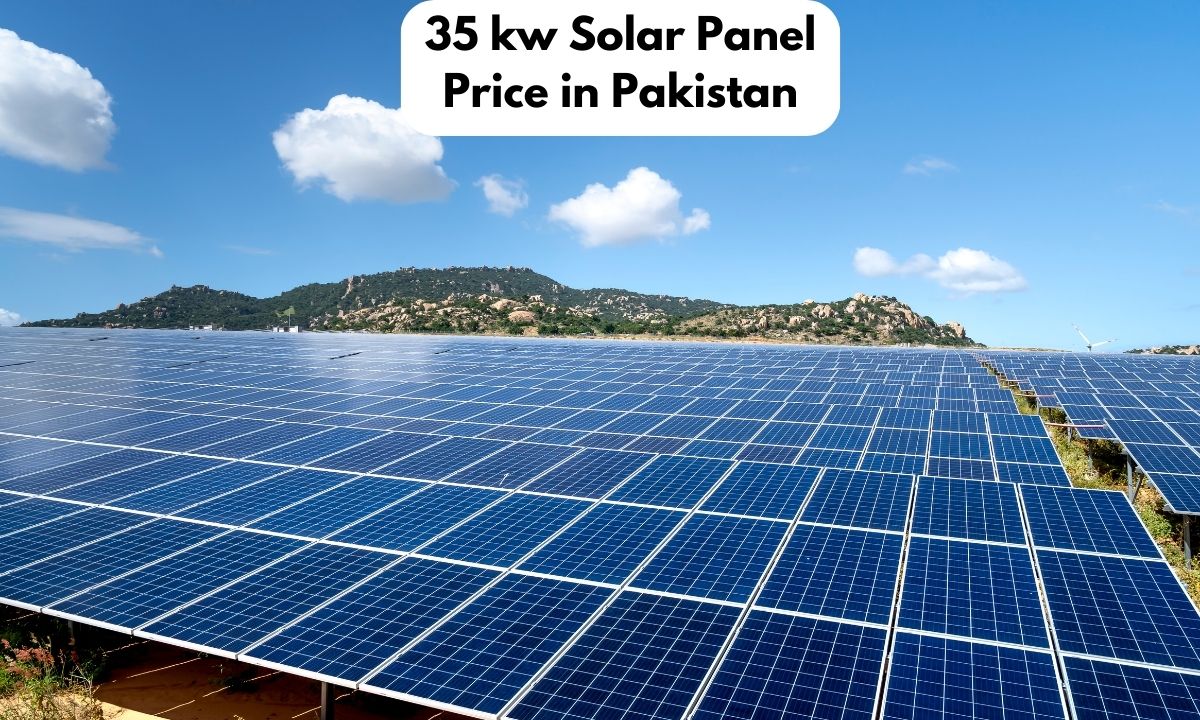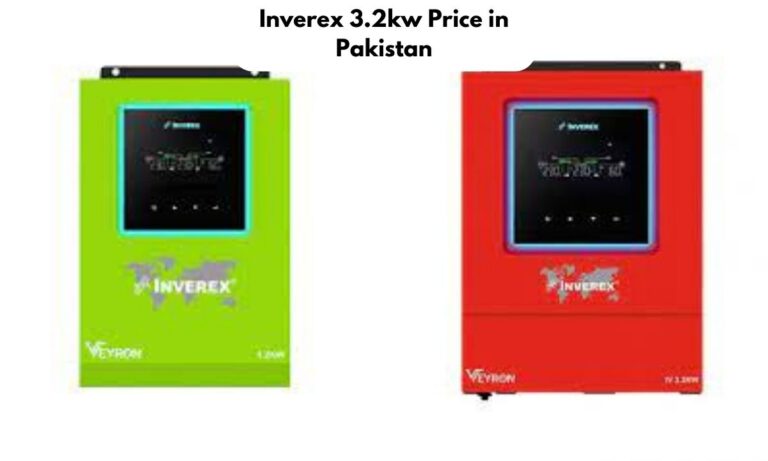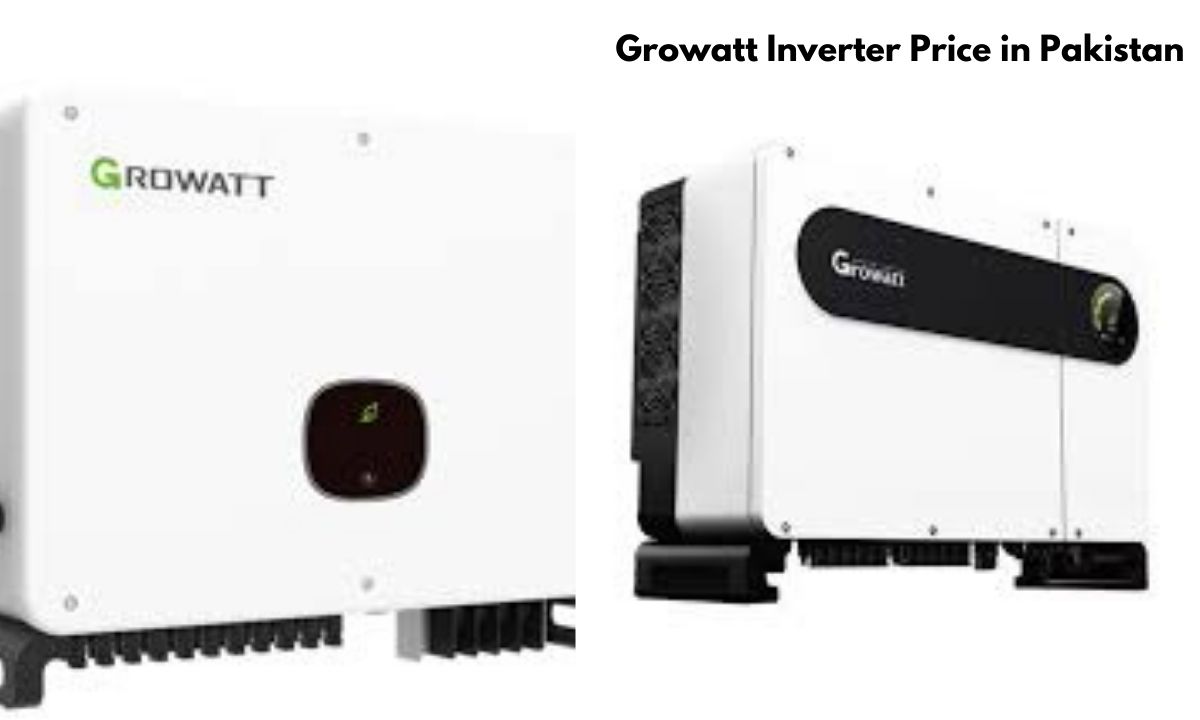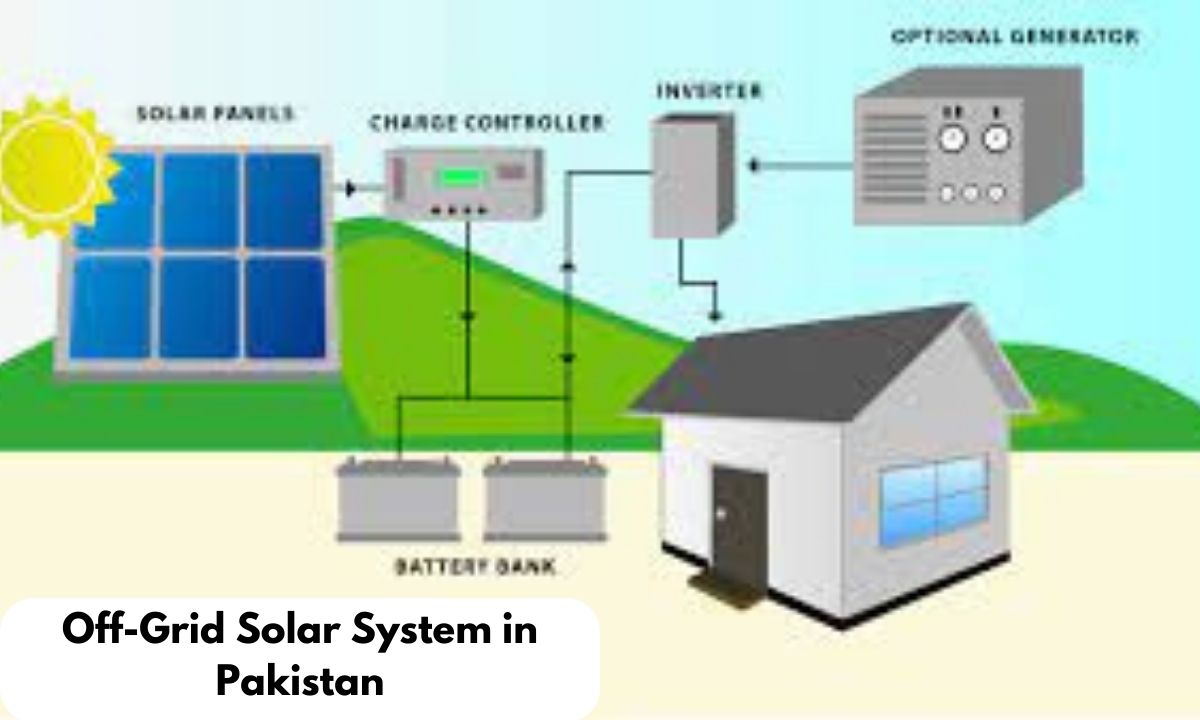35 KW Solar System Price in Pakistan (Latest Guide)
In the lively energy scene of Pakistan, the 35 kW solar system shines as a ray of hope for those dealing with the country’s unpredictable electricity prices. Priced between PKR 7.5 to 9 million, these systems demand a noteworthy but thoughtful investment for energy users. Amid Pakistan’s economic hurdles, embracing solar energy is not just a fad but a vital choice for sustainability.
The 35 kW solar system emerges as a robust solution, providing a dependable and environmentally friendly option to traditional power sources. It marks a positive move towards energy self-sufficiency, empowering businesses and large homes to tap into the abundant sunlight in the nation. This not only helps curb the impact of rising electricity expenses but also contributes to a more eco-conscious Pakistan.
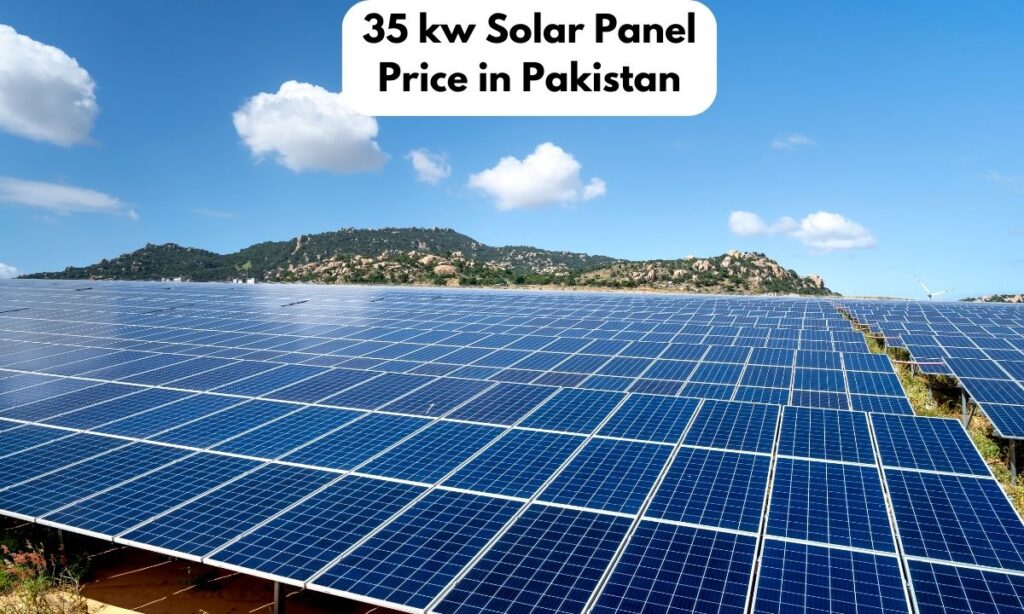
Types of 35 kW Solar Systems
Solar systems come in three main types: On-Grid, Off-Grid, and Hybrid. Each of these systems has its functions, advantages, and drawbacks, making them suitable for different uses and settings.
On-Grid System
On-grid systems, also known as grid-tied systems, are the most common type used by homes and businesses. These systems are linked to the local utility grid and don’t need energy storage. If there’s no power from the national grid, there’s a blackout. The main advantage of on-grid systems is that you don’t need to buy an expensive battery backup system to store extra energy.
Off-Grid Systems Off-Grid systems are entirely independent of the national electric grid. They need large storage because they have to store all the electricity they generate. These systems are great for houses and communities that are far from the grid or can’t connect to it.
Hybrid Systems
Hybrid systems combine the best features of both on-grid and off-grid systems. They can be connected to the national electric grid and also have storage based on load requirements. In terms of energy storage, hybrid systems use a size that depends on load requirements. They are less costly than off-grid solar systems and don’t necessarily need a backup generator.
Cost of 35 kW Solar Systems in Pakistan
In Pakistan, the price of a 35 kW solar system depends on various factors, such as the brand of solar panels and inverters, the system type (On-Grid, Off-Grid, or Hybrid), and the installation charges. Typically, these systems cost between PKR 4,251,000 to PKR 4,322,000.
Factors Affecting the Price
- Brand of Solar Panels and Inverters: Prices vary among different brands based on factors like quality, efficiency, and warranty terms. For instance, a 35 kW On-Grid Solar System with Jinko 550Watts Solar Panels and a 35 kW Growatt Inverter is priced at PKR 4,322,000, while the same system with Longi 550Watts Solar Panels is priced at PKR 4,251,000.
- Type of System: On-Grid, Off-Grid, and Hybrid systems differ in components and complexities, impacting the overall cost.
- Installation Charges: Labor and additional materials needed for installation may vary based on location and system complexity.
- Additional Equipment: Costs might rise if extra equipment, like battery storage for Off-Grid and Hybrid systems, is necessary.
Price Range The general price range for a 35 kW solar system in Pakistan is typically between PKR 4,251,000 to PKR 4,322,000. However, it’s important to consider that prices may change due to market dynamics, alterations in import duties, and currency exchange rates.
Brands and Their Prices
- Jinko Solar Panels with Growatt Inverter: PKR 4,322,000.
- Longi Solar Panels with Growatt Inverter: PKR 4,251,000.
These prices apply to On-Grid systems, commonly installed in urban areas with an available grid. For Off-Grid and Hybrid systems, prices may be higher due to additional expenses for batteries and a more intricate installation process. It’s worth noting that the provided prices are subject to change based on market conditions.
Return on Investment (ROI) for 35 kW Solar Systems
Evaluating the Return on Investment (ROI) is crucial for businesses and large homes contemplating the shift to solar power in Pakistan. The potential savings on electricity bills and the time it takes to recover the initial investment play key roles in calculating the ROI.
Potential Savings on Electricity Bills:
A 35 kW solar system can significantly cut down electricity demand for businesses and industries, resulting in substantial savings on electricity bills. In Pakistan, where sunlight is abundant, a 35 kW system can produce about 52,500 kWh of electricity each year.
While the actual savings depend on current electricity rates and usage patterns, a similar 30 kW system could slash monthly electricity bills by up to PKR 130,000 – 150,000, translating to annual savings of approximately PKR 15-16 lacs. These savings are likely to grow with increasing electricity rates.
Payback Period:
The payback period is the time it takes for the solar system’s savings to cover the initial investment. For a high-quality 30 kW system, the payback period is estimated between three to six years. Although this data pertains to a slightly smaller system, it can be inferred that the payback period for a 35 kW system would be in a similar range, especially considering the higher energy output and potential savings.
Government/Utility Company Subsidies:
Government and utility company subsidies can significantly impact the system’s payback period. These subsidies reduce the upfront cost, thus shortening the payback period and enhancing the overall ROI. In a survey in northern Pakistan, about 77% of respondents expressed interest in buying solar panels if the government subsidized 50% of the cost.
Additionally, the Khyber Pakhtunkhwa government has launched a 50% subsidy scheme for solar-powered irrigation systems in specific areas, further incentivizing the adoption of solar technology.
Benefits of 35 kW Solar Systems for Businesses and Large Residences
The 35 kW solar systems bring multiple benefits to businesses and large homes, including cost savings, energy self-sufficiency, and a decrease in carbon emissions.
Cost Savings:
- A significant advantage of a 35 kW solar system is the potential for substantial savings on electricity bills. Producing around 52,500 kWh of electricity annually, it greatly cuts down the need for grid electricity. This reduction translates into significant cost savings, especially for businesses with high energy consumption.
Energy Independence:
- Solar systems provide a level of energy independence, lessening reliance on the grid. This is particularly advantageous for businesses heavily dependent on electricity, giving them more control over their operations. During power outages or fluctuations in grid electricity prices, businesses with solar systems can maintain operations with minimal disruption.
Reduced Carbon Emissions:
- Generating clean, renewable energy, solar systems contributes to a reduction in carbon emissions. Embracing solar energy allows businesses and large homes to make a substantial impact on the environment, supporting global initiatives to combat climate change.
Enhancing Business Operations:
- Apart from direct benefits, the adoption of solar energy can elevate business operations in various ways.
Sustainability Image:
- Businesses incorporating solar energy can enhance their reputation as sustainable and environmentally responsible entities. This is a significant advantage in today’s market, where consumers increasingly prioritize sustainability.
Government Incentives:
- Businesses installing solar systems can often take advantage of various government incentives, such as tax credits, enhancing the system’s overall return on investment.
Reliability:
- Solar power systems are reliable and require minimal maintenance, ensuring a consistent power supply for businesses.
Potential for Revenue:
- In some instances, businesses may even generate revenue by selling excess electricity back to the grid. This additional income stream contributes further to the economic viability of solar investments.
Conclusion
The inclusion of 35 kW solar systems in Pakistan’s energy scene signifies a crucial move towards a future that’s more sustainable and robust. These systems don’t just ease the burden of hefty electricity bills; they also showcase the country’s dedication to cleaner, renewable energy.
The significant savings on electricity, along with the perks of having energy independence and less carbon emissions, highlight the role of solar power as a strategic asset for both businesses and larger homes.
As Pakistan grapples with ongoing energy challenges, embracing solar technology brings a ray of hope, promising not only economic benefits but also positive impacts on the environment. More businesses and homes need to recognize the long-term value and potential of solar energy systems.
By investing in solar power, they not only secure a greener and more cost-effective energy solution but also contribute to the nation’s journey towards sustainable energy. The 35 kW solar system serves as a powerful example of how renewable energy can be utilized to foster growth, stability, and a cleaner environment for generations to come.
